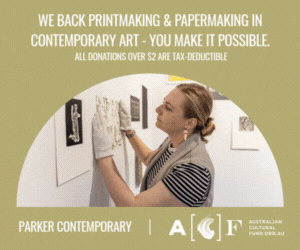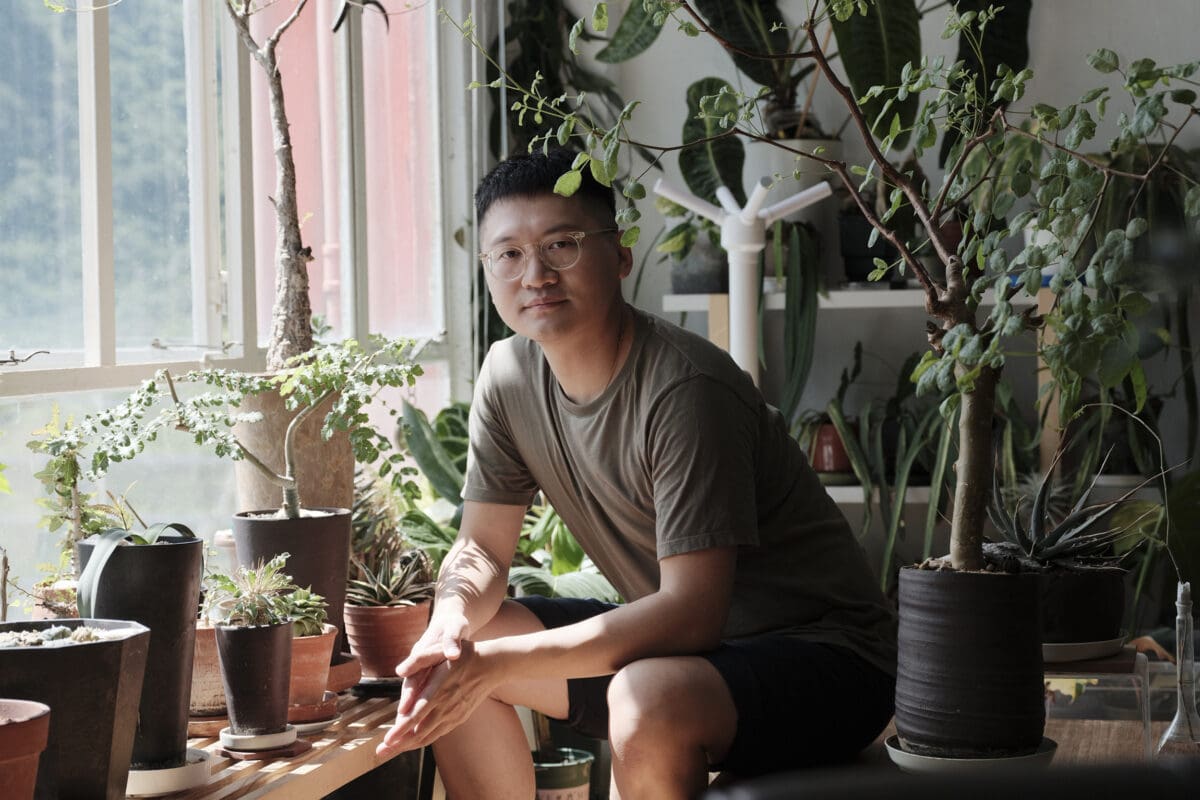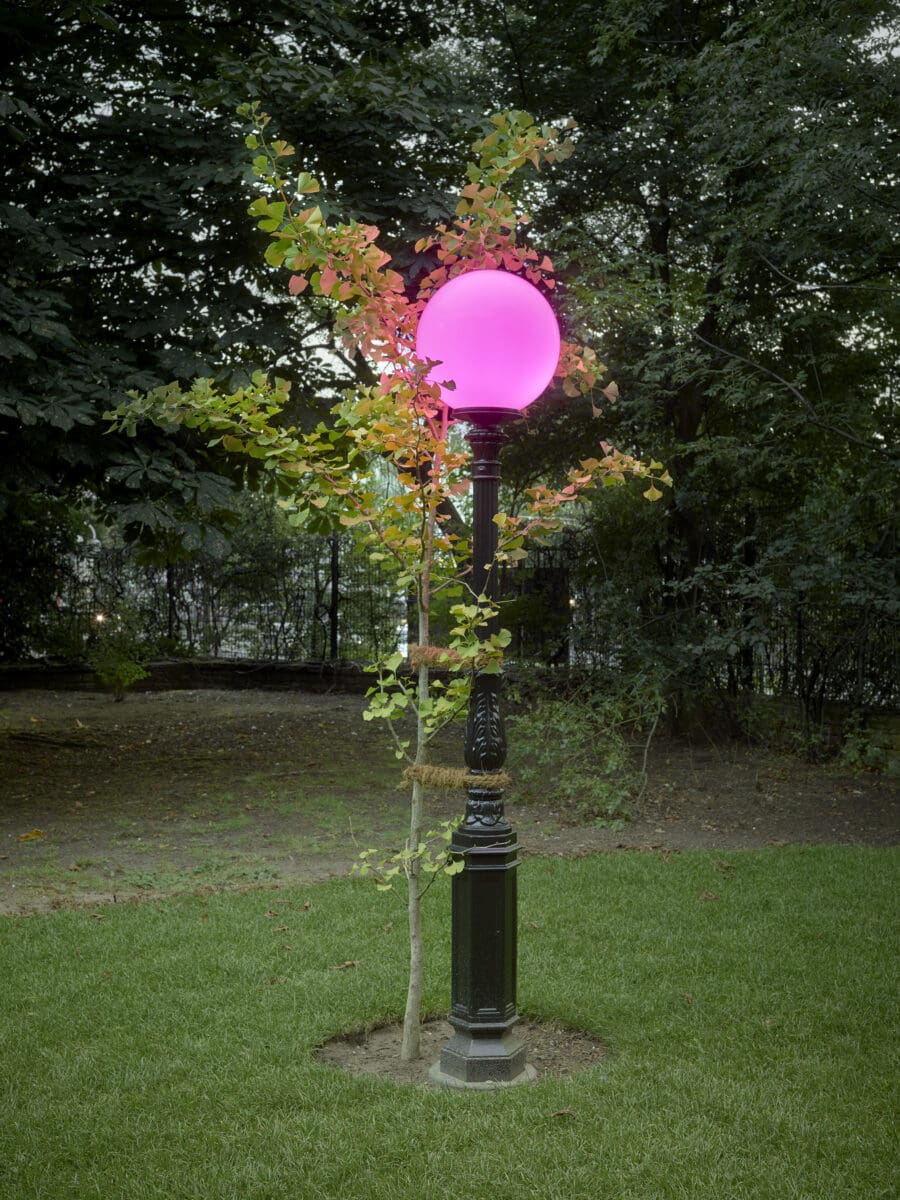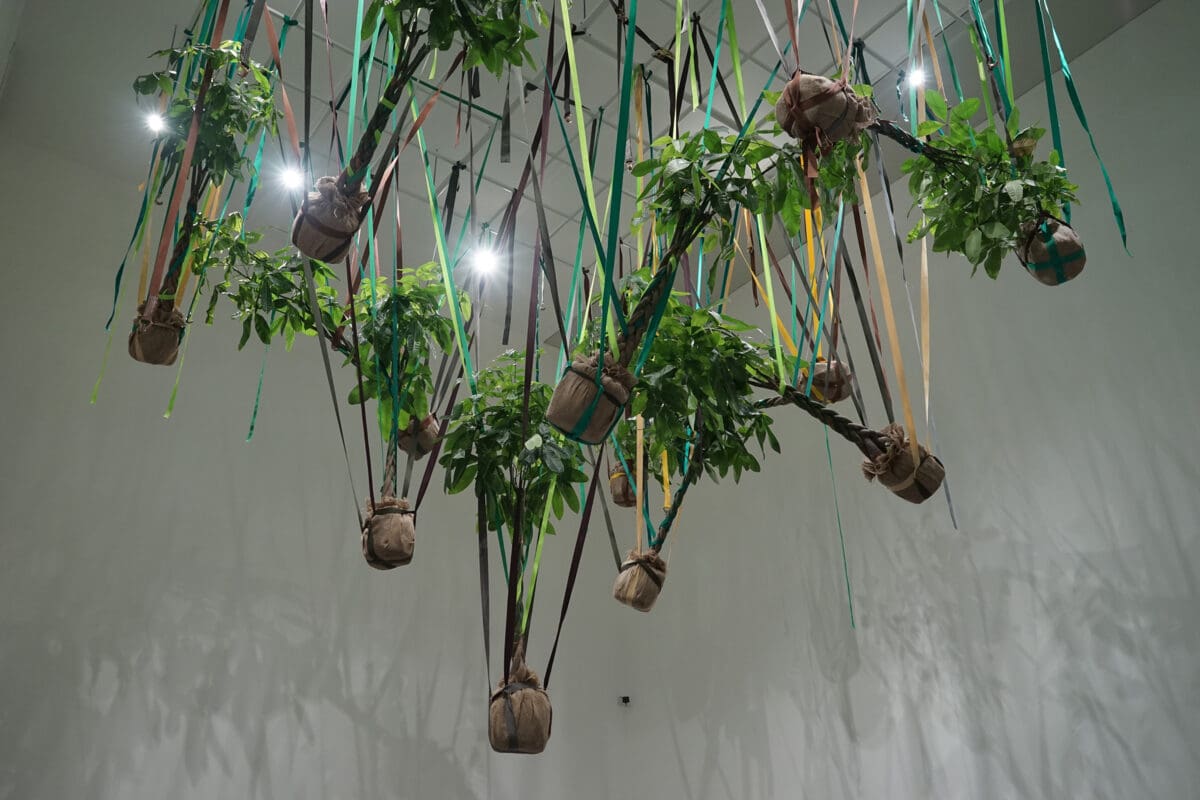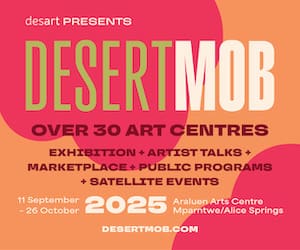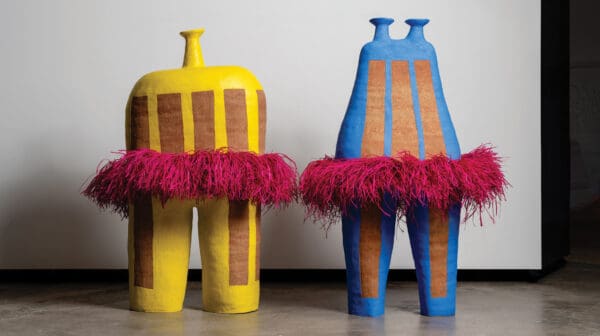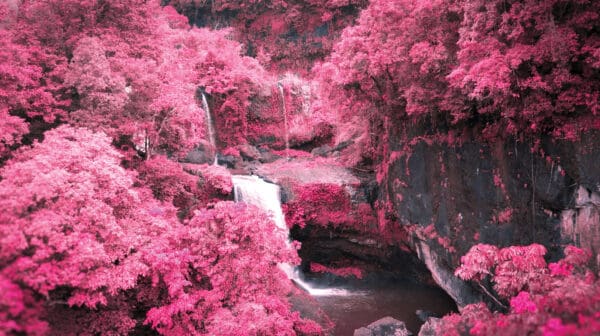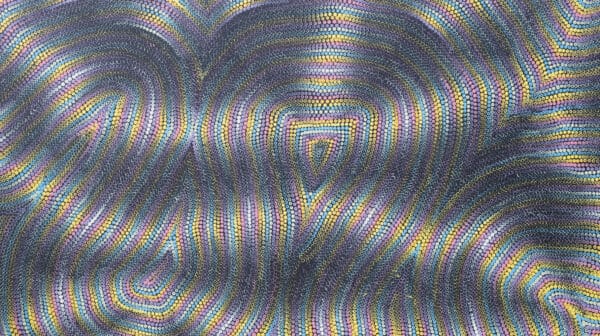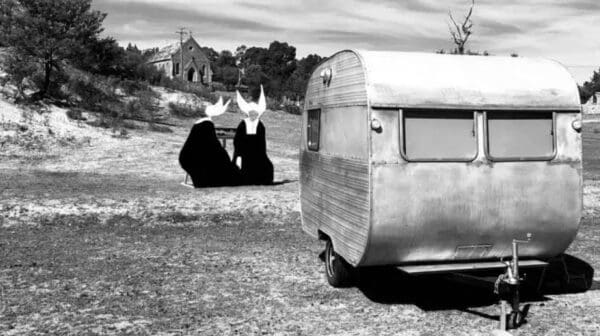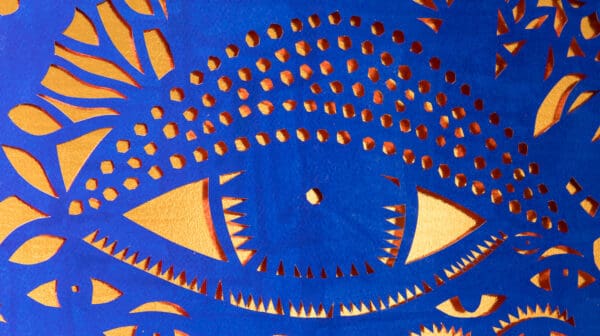Trevor Yeung and I are speaking about the impulses of art critics. Specifically, their tendency to make meaning legible and straightforward, drawing straight lines between an artist and their identity or influences. These are traps all writers fall into— a context that wraps a work into a neat little bow, a desire for synchronicity between aesthetic expression and emotion. But what to do when an artwork is made from feelings where language can’t keep up?
I’ll do my best: Hong Kong-based artist Trevor Yeung is drawn toward the inexpressible and the unseen, those cloudy undercurrents and emotions that are felt, but are not easily explained. “My work is really focused on…the elephant in the room. It’s in the air, but you can’t talk about it,” says Yeung. “That is the good thing about making art, you are not using language to describe it, but [instead] you’re making a scenario to trigger the audience into certain feelings.”

At first, Yeung’s art career was an extension of his adolescent obsession with plant and fish life. In 2011, his installation, I could be a good boyfriend, involved growing a Venus flytrap under a bell jar. Elsewhere, he placed aquariums onto plinths, and suspended money trees in the air. These works were often described as a comment on relationality, artificiality, and control. And while it’s true that his work orbits around systems and a desire to understand how they work, Yeung’s art also reflects how systems help people to grapple with the ineffable, how desire is enacted through subtle signals and small routines.
“I was looking at the moment after the party…when people don’t want to go home so they try to prolong it, even though everything is falling apart,” says Yeung.
When Yeung was first asked to contribute to the Biennale of Sydney, his mind turned toward his own experience of the city a few years ago. It had been Mardi Gras, and Yeung had felt like an outsider, a little alienated from its excesses and its monolithic display of queer culture. But what fascinated him was not the partying, but the elongated aftermath. Everyone wanted to stretch this transient euphoria. There was a refusal to submit to endings. So, revellers pulled at these pleasures, clutching onto feelings that had already begun to dissolve. “I was looking at the moment after the party…when people don’t want to go home so they try to prolong it, even though everything is falling apart,” says Yeung.
At the same time, Yeung had begun to think about the gay saunas of Sydney, how it was an ecosystem governed by its own unspoken rules, rituals, languages, and small intimacies—almost in opposition to these celebrations. There were people interacting of “different ages and different races, some of the people that you will not see during Mardi Gras”. Spots of sexual contact have worked into his work before; in 2022, he made a soap replica of a horizontal oak tree in London’s Hampstead Heath, known as a cruising spot.
But Yeung is adamant that while these experiences might be unique to gay culture, the emotions they conjure are not. For Yeung, these moments are “the bridge” to explore wider phenomena—the inability to reconcile with the loss of bliss, for instance, or the tiny symbols that make intimacy possible.
These feelings and gestures are funnelled into his Biennale work. Yeung will make the event’s theme Ten Thousand Suns somewhat literal: cramming in a mass of light bulbs and chandeliers into the Walsh Bay Power Station (meanwhile, he will also install a series of fish tank works at Artspace). To explain this new work, Yeung sends me a folder with photographs. There’s one of his works from his Night Mushroom Colon series—a jumble of adapters sprouting synthetic ferns and glowing, ghostly mushrooms. There’s his 2020 installation two reliers in Cologne, where he turned a street lamp into an unearthly orb, emitting a shocking pink light. The rest were of different light bulbs he had used in various exhibitions—some hanging loose from the ceiling, others forming a tangled constellation. Each chandelier will run off a closed-circuit system, reflecting the dual forces of interconnectedness and isolation that characterise modern life.
Yeung’s explorations remind me of a book about the social systems we often fail to acknowledge and appreciate: Samuel R. Delany’s Times Square Red, Times Square Blue. The beloved sci-fi writer turned his gaze to porn theatres of midtown Manhattan which he had frequented for decades, rapidly disappearing as the new millennium creeped in. The first essay is something of a swan song, Delany chronicling his encounters below the cinema screen, the relationships and friendships forged from darkness. The second essay posits that these spaces are more than havens for gay sex and fleeting intimacies—they were places which encouraged contact between people of different classes and races, a growing anomaly as city zoning and gentrification siloed divergent socio-economic statuses. Decades on, our metropolitan cities are so much more stratified than what Delany imagined— something Yeung seems to have intuited in his quest for quiet intimacies.
Delany’s proposal though still rings true: “For decades the governing cry of our cities has been ‘Never speak to strangers.’ I propose that in a democratic city it is imperative that we speak to strangers, live next to them, and learn how to relate to them on many levels, from the political to the sexual,” he writes. “City venues must be designed to allow these multiple interactions to occur easily, with a minimum of danger, comfortably, and conveniently. This is what politics—the way of living in the polis, in the city—is about.”
Trevor Yeung
White Bay Power Station and Artspace
24th Biennale of Sydney: Ten Thousand Suns
9 March—10 June
This article was originally published in the March/April 2024 print edition of Art Guide Australia.

